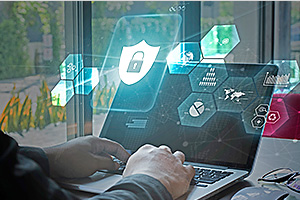How the BYOD trend has changed the cybersecurity landscape
One of the biggest changes we’ve seen in the last two years, as organizations have adjusted to a remote way of doing business, is that workers...
2 min read
![]() Zones
:
Jan 12, 2022 4:00:00 AM
Zones
:
Jan 12, 2022 4:00:00 AM

As we all collectively move forward into 2022, something is becoming increasingly clear – the large-scale changes we made to our workplace modernization strategies two years ago were not temporary. They were not merely “quick fixes.” No – what happened in 2020, when we all moved to remote work and distributed IT management, was a permanent shift in the way we manage people and their technology. We now have an entirely new way of giving people the IT infrastructure they need to succeed.
According to SecurityBrief Australia, a crucial component of digital transformation in the years ahead will be the idea of “bring your own device” (BYOD) taking hold in the workplace. The idea of people using their own devices for completing work tasks has been around for years, but since people shifted two years ago to a largely remote work paradigm, BYOD has only reached new heights. Anurag Kahol, founder and chief technology officer of Bitglass, pointed to recent survey data showing that 70% of all businesses now enable BYOD for employees, and 62% are even doing so for “extended employees,” a group that includes contractors, partners, and suppliers.
“BYOD started as a cost-saving measure for businesses that didn’t want to continue paying for IT refreshes all the time,” Kahol explained. “But fast forward to today, and very few digital transformation initiatives can be successfully achieved without it at their core.”
BYOD offers many benefits when implemented well. After all, people tend to be more comfortable and thus more productive when using their own technology, and this should translate into better results for any business. But the downside risk is also there, and it comes in the form of security vulnerabilities.
What can you do to ensure employees are using their own devices in a way that’s responsible and safe? There are no perfect “silver bullet” answers – but surely these three strategies can help.
Workplace device deployment is a challenge. It always has been. And in today’s era of BYOD, the challenges are only becoming greater. But at Zones, we’re here to alleviate such challenges and make life easier for everyone.
We have an entire team of specialists on board who focus on ensuring smooth, effective Workplace Modernization. And we modernize every type of workplace, whether your people are working out of a traditional office setting or your people are deploying their own technology in their own homes. No matter where your people are, or how they work, our goal is to ensure they’re successful. Connect with us today if you’d like to learn more.

One of the biggest changes we’ve seen in the last two years, as organizations have adjusted to a remote way of doing business, is that workers...

When the pandemic first began earlier this year and employees began working from home, it necessitated major changes to many organizations in terms...

The unfortunate truth is that workplace modernization is a more nebulous process right now than it’s ever been. Everything used to be so simple –...